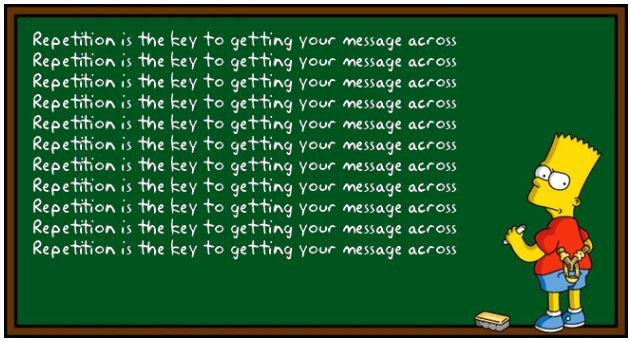The Annoyance of Advertising Repetitiveness: Striking the Right Balance
Advertising is an unavoidable part of modern life, but one of the main reasons it often annoys us is its repetitiveness. This phenomenon isn’t just a minor inconvenience; it’s a complex challenge that advertisers and marketers must navigate carefully.
The tension between the need for repeated exposure and the risk of overexposure is a fine line, and crossing it can result in advertising fatigue—a state where ads lose their effectiveness and even start to irritate the audience.
Note:
This article features content from the Marketing Made Clear podcast. You can listen along to this episode on Spotify:
The Rule of 7: The Need for Repetition
A well-known concept in marketing is the “Rule of 7,” which suggests that a potential customer must be exposed to a marketing message at least seven times before they take action. This principle, widely used by advertisers, underscores the importance of repetition in marketing strategy. The idea is simple: the more a message is seen, the more likely it is to stick in the consumer’s mind, eventually leading to engagement or a purchase decision.
This rule is rooted in psychological theories of learning and memory, which emphasise the importance of repeated exposure to information for it to be retained and recalled. According to Hermann Ebbinghaus’s research on the forgetting curve, repetition helps to counteract the natural tendency to forget information over time . In the context of advertising, the Rule of 7 aims to leverage this psychological insight to ensure that a brand’s message is memorable.

Advertisement Fatigue: The Risks of Overexposure
However, while repetition is necessary, it comes with a significant caveat: the risk of advertisement fatigue. Advertisement fatigue occurs when consumers are exposed to the same ad too many times, leading to a decline in its effectiveness. Research indicates that the effectiveness of an ad begins to wane after being seen between six to eight times . Beyond this threshold, consumers may not only ignore the ad but also develop negative feelings towards it.
This phenomenon is closely related to ad blindness, a concept where individuals unconsciously ignore certain types of ads, especially those that have become overly familiar. On digital platforms, for instance, ads located around the periphery of a website are often ignored as users focus on the main content . This selective attention means that despite the high frequency of ad exposure, the intended message may never actually reach the consumer’s conscious awareness.
The Modern Advertising Paradox: How Much Is Too Much?
Advertisers face a paradox: they need their message to be seen enough times to be effective, but not so many times that it leads to fatigue. With estimates suggesting that the average person is exposed to around 5,000 advertisements per day , it’s no surprise that people can’t retain all that information. This saturation makes it even more challenging for any single ad to stand out, let alone avoid causing annoyance.
So, what’s the solution? It’s not about spending more on increasing the number of ad placements but rather about refining the creative content and strategically varying the ads. For instance, in the realm of digital advertising, especially on platforms like Facebook, this might mean changing the images or tweaking the text of an ad to keep it fresh. For television ads, it could involve creating different versions of an ad that tell a story, keeping the audience engaged and invested over time.
Just a note – you may notice that TV adverts launch with a longer advert, then they quickly run a shorter version of the advert. This is to reduce the fatigue of the campaign. The idea is that the longer version helps to embed the ad concept into customer’s heads, with a full understanding, then latter adverts will be much shorter, with a more concentrated message. This allows for a greater frequency of adverts in the early stages of the ad campaign.

The Role of Analytics in Managing Ad Frequency
Modern analytics tools are crucial in managing ad frequency effectively. Most advertising platforms provide data on how often, on average, a user sees an ad. By monitoring this data, advertisers can make informed decisions about when to refresh their creative content to avoid the pitfalls of overexposure.
Furthermore, a nuanced understanding of audience tolerance is essential. Some ads, particularly those that are well-crafted and engaging, seem to defy the general rule and remain effective even with repeated exposure. These ads often resonate on an emotional level, creating a connection that overrides the potential for irritation.

Conclusion: Navigating the Fine Line of Advertising Repetitiveness
In conclusion, while repetition is a necessary component of effective advertising, it must be balanced with creativity and variation to avoid the risk of advertisement fatigue. Understanding the dynamics of ad repetition, leveraging analytics, and continually refreshing ad content are key strategies in navigating this complex terrain. Advertisers who can strike the right balance between the Rule of 7 and the risks of overexposure are more likely to keep their audiences engaged and receptive rather than annoyed and dismissive.
Up Next:
More marketing hate!


